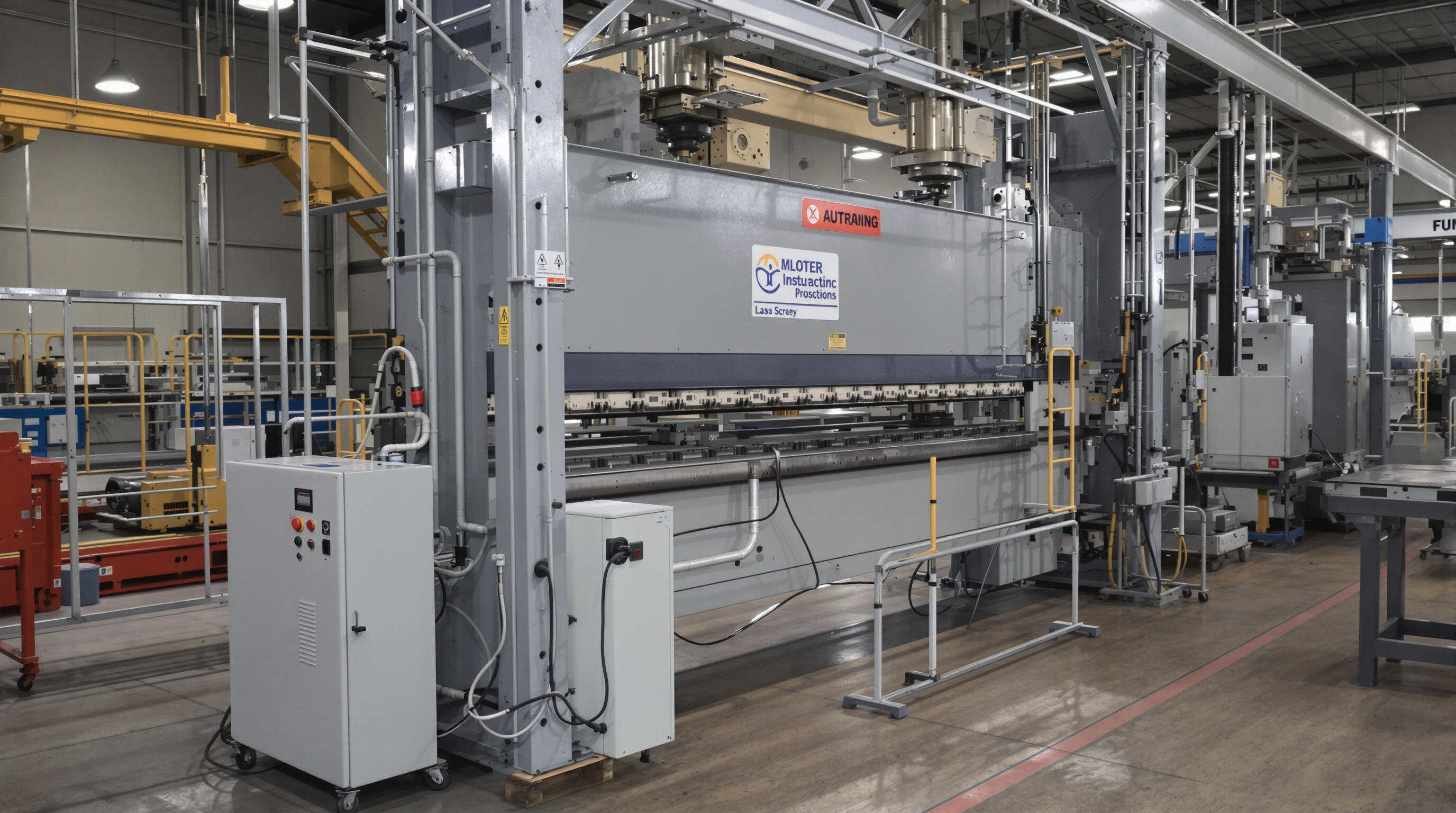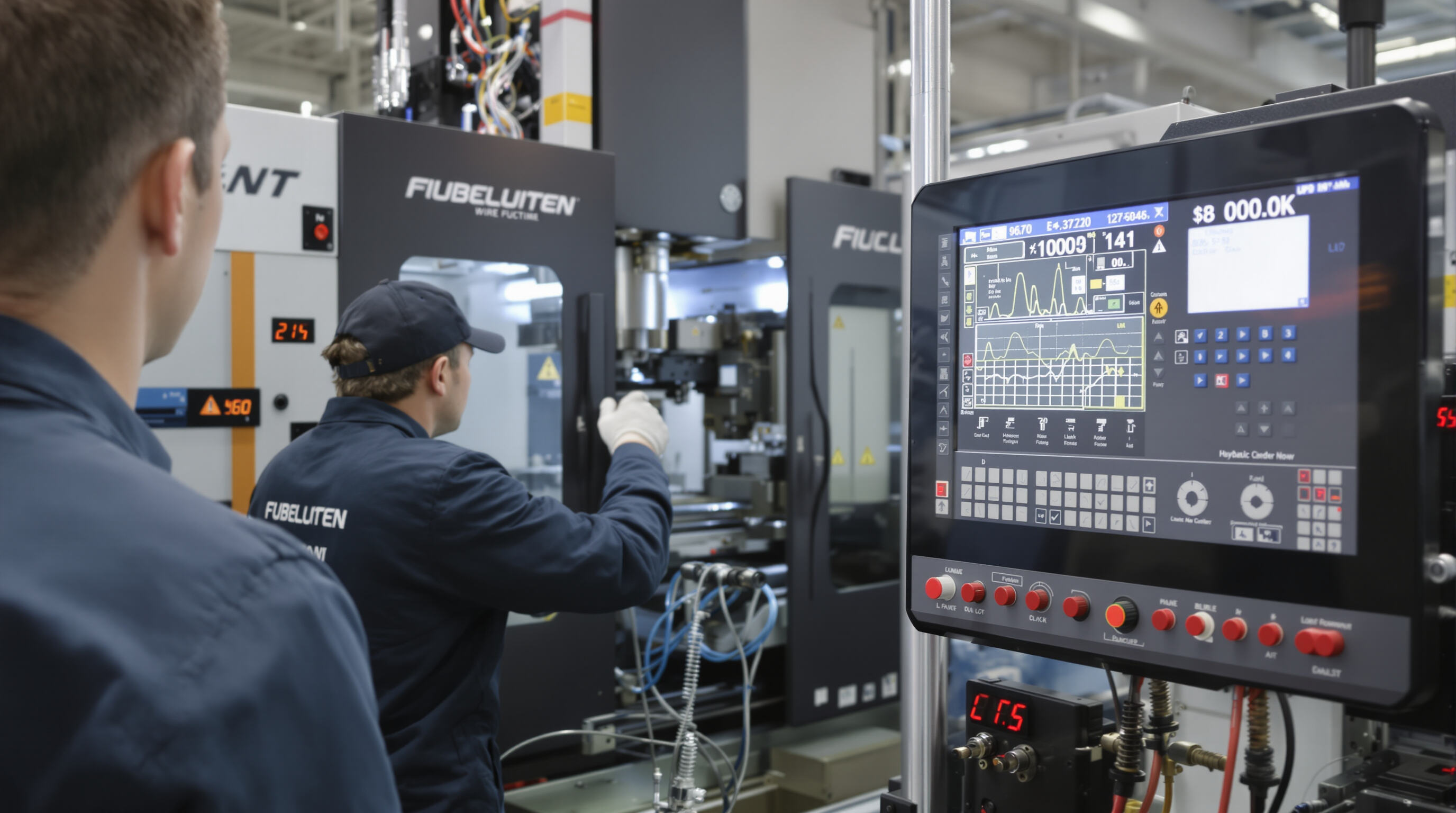How Hydraulic Wire Bending Machines Transform Modern Manufacturing
The manufacturing world has really taken to hydraulic wire benders these days because they deliver both muscle and accuracy where it matters most. These machines work by pumping hydraulic fluid under pressure to create forces well over 50 tons according to Machinery Today's latest numbers from last year. What makes them so valuable is their ability to bend all sorts of metals including steel, aluminum, and those special alloy mixes without messing up the material properties. We've seen a pretty impressive jump in usage across auto shops and airplane part manufacturers too. Since around 2020, shops in these industries have been getting about 34% more of these machines installed on their floors. The reason? Parts need to be shaped into increasingly complicated forms these days whether we're talking about car frames or aircraft fuel systems.
Understanding Hydraulic Actuators and Their Role in High-Force Bending
Hydraulic actuators convert fluid pressure into linear motion through a piston-cylinder mechanism. This design delivers three critical advantages for wire bending:
- Gradual force application prevents sudden stress spikes that cause fractures
- Load-sensitive operation automatically adjusts pressure based on material resistance
- Overload protection safeguards against tooling damage during off-center bending
Compared to electric servos, hydraulic systems maintain 98% torque efficiency at near-stall conditions, making them ideal for bending high-strength materials like titanium alloys.
Advantages Over Mechanical and Pneumatic Bending Systems
Hydraulic systems outperform mechanical counterparts by 41% in energy efficiency during high-volume production (Manufacturing Tech Review 2024). Key differentiators include:
| Factor | Hydraulic | Mechanical | Pneumatic |
|---|---|---|---|
| Maximum Force | 50+ tons | 15 tons | 8 tons |
| Repeat Accuracy | ±0.1° | ±0.5° | ±1.2° |
| Maintenance Cycles | 500 hours | 200 hours | 100 hours |
This performance translates to 23% fewer production rejects in medical device manufacturing applications.
Industrial Impact: Efficiency, Durability, and Scalability
Leading automotive plants report 18% faster cycle times after switching to hydraulic wire bending systems. The machines’ modular architecture allows seamless integration with CNC controllers and IoT-enabled quality monitoring systems. With proper maintenance, hydraulic components demonstrate 10,000+ hour lifespans–3X longer than pneumatic alternatives.
Scalability remains a key strength, as operators can adjust pressure settings and tooling to handle diameters from 1mm microfilaments to 25mm industrial cables. This flexibility supports everything from prototyping to mass production without requiring complete system overhauls.
Core Components and Engineering Behind Hydraulic Wire Bending Machines

Frame, Dies, and Hydraulic Power Units: Building a Robust System
Hydraulic wire bending machines start off with something really important - a heavy duty steel frame built to take on serious operational stress. The frame holds those precision machined dies which actually do the work of shaping wires into all sorts of complicated shapes without messing them up. What makes these machines tick is the hydraulic power unit, commonly called HPU for short. This component creates just the right amount of fluid pressure needed to apply steady force during each bending cycle. These days most advanced setups come equipped with self lubricating guide rails along with hardened tool steel dies. This combination helps cut down on wear and tear when running at full capacity for long periods in manufacturing settings.
Precision Movement Enabled by Hydraulic Actuators
Hydraulic actuators take fluid pressure and turn it into mechanical force with incredible accuracy at the micron level, which makes them great for controlling speeds when doing bending work. These aren't like pneumatic systems where pressure tends to fluctuate quite a bit. Hydraulic ones keep things pretty stable around ±1.5% variance even when the load changes back and forth. The newer advanced versions come equipped with special servo valves that tweak flow rates on the fly. This allows manufacturers to hit bend angles within just ±0.1 degrees tolerance. That kind of precision matters a lot for parts used in aircraft construction where measurements need to be spot on down to fractions of a millimeter.
Integration of CNC Controls for Repeatable Accuracy
When it comes to metalworking, CNC technology has basically turned ordinary hydraulic presses into smart bending machines that can handle all sorts of complicated jobs. What happens is that technicians input detailed bending instructions via computer-aided design software, and the CNC system takes care of coordinating things like hydraulic pressure levels, where the actuators are positioned, and how the dies rotate during operation. According to some recent industry data from Manufacturing Tech Journal back in 2023, shops that have adopted these CNC systems report cutting down on setup mistakes by around two thirds. Plus, switching between different batches of parts now takes less than five minutes instead of what used to be much longer. Another big plus is the real time pressure tracking that helps compensate when materials try to spring back after being bent. This means products stay within tight tolerances, typically keeping dimensions consistent within about half a millimeter throughout entire production runs.
Achieving High Precision in Wire Bending with Hydraulic Control
Importance of Precision in Aerospace, Automotive, and Medical Applications
The modern industrial world needs wire bending down to the micron level these days. Take aerospace parts for example most components now have tolerances under plus or minus 0.05 mm according to recent industry standards. When it comes to medical devices manufacturers have seen something interesting happen too. Implant rejection rates dropped by around 12% when companies started getting those bends just right using hydraulic systems instead of older methods. And let's not forget what happens on factory floors across the country. Companies that swapped out their manual setups for hydraulic wire benders saw assembly line delays cut down by nearly a third. This matters a lot for things like fuel injectors where precision is everything or even tiny stent frames that need to fit perfectly inside human bodies.
Minimizing Deformation Through Consistent Hydraulic Pressure
Hydraulic actuators achieve deformation rates of <0.8% even with high-strength materials like 316L stainless steel, outperforming pneumatic systems by up to 3:1 in deformation benchmarks (ASME 2023). Advanced pressure-regulating valves maintain force consistency within ±1.5% across bending cycles, critical when forming titanium orthopedic implants where even minor inconsistencies trigger stress fractures.
Calibration and Maintenance for Long-Term Accuracy
Quarterly recalibration preserves positioning accuracy within 0.01 mm for over 96% of hydraulic bending machines (ISO 9001 maintenance data). Operators using predictive maintenance tools see a 40% longer service life in hydraulic seals compared to reactive maintenance approaches, directly reducing drift in bend angles during continuous production.
Balancing Speed and Precision in High-Volume Production
Automotive tier-1 suppliers demonstrate hydraulic systems achieving 850 bends/hour with <0.1° variance, enabling precision at speeds 22% faster than servo-electric alternatives (Automotive Manufacturing Solutions 2023). Dual-stage hydraulic pumps now allow operators to toggle between 35-ton forming pressures for thick-gauge wire and low-force fine-tuning modes in under 3 seconds.
CNC and Digital Integration: The Future of Hydraulic Wire Bending

Today's hydraulic wire benders rely on CAD/CAM systems to turn those intricate 3D wire designs into actual CNC commands for the machine. The engineers set up these multi-axis bends down to within 0.1 millimeters accuracy, which makes it possible to create all sorts of complicated shapes from spiral springs to odd-shaped brackets that just wouldn't work any other way. When companies switch to automated toolpath creation, they typically save around three quarters of the time spent on programming manually. Plus, there's no more second guessing if someone made a mistake during setup, especially important when running batches of different parts through the same machine.
Real-Time Feedback and Error Correction Systems
Closed-loop hydraulic control systems constantly monitor variables like ram position, pressure (up to 3,000 PSI), and material rebound. Instant corrections during the bending cycle compensate for tube ovality and wall thickness variations, achieving 99.8% conformity in aerospace fuel line fabrication.
Smart Factories and IIoT: Connecting Bending Machines to Industry 4.0
Industrial IoT integration transforms hydraulic benders into data nodes within smart manufacturing ecosystems. Recent analyses show IIoT-connected machines achieve 30% faster job changeovers through cloud-based recipe management, while AI-optimized workflows reduce energy consumption per bend by 18% in automotive mass production.
Key Industrial Applications of Hydraulic Wire and Tube Bending Equipment
Hydraulic wire bending machines excel across industries requiring robust material shaping with micron-level precision. Their ability to handle complex geometries while maintaining structural integrity makes them indispensable for modern manufacturing.
Automotive and Aerospace: High-Tolerance Structural and Hydraulic Components
In automotive production, these machines form exhaust systems, suspension linkages, and brake line components capable of withstanding pressures up to 6,000 PSI. Aerospace applications demand even tighter tolerances (±0.02 mm), with hydraulic bending systems shaping fuel lines, landing gear actuators, and titanium airframe supports that meet AS9100D aerospace standards.
Medical Devices: Precision Bending for Critical Instruments
Surgical tool manufacturers rely on hydraulic systems to create flawless curves in stainless steel biopsy needles and titanium orthopedic implants. The process ensures burr-free surfaces crucial for devices requiring IEC 60601 electrical safety compliance, while closed-loop pressure control prevents work hardening in nitinol stents during coronary applications.
Construction and Furniture: Custom Profiles and Durable Supports
Hydraulic benders produce architectural rebar grids with 90° bends at 30 mm radii for seismic-resistant concrete structures. Furniture makers leverage this technology to craft ergonomic chair frames from aluminum tubing, achieving bend angles up to 180° without compromising powder-coated finishes.
FAQ Section
What are hydraulic wire bending machines used for?
Hydraulic wire bending machines are used for accurately bending metals such as steel, aluminum, and alloys into complex shapes required in automotive, aerospace, medical devices, construction, and furniture industries.
How do hydraulic actuators benefit the bending process?
Hydraulic actuators convert fluid pressure into mechanical force with high accuracy, enabling gradual force application, load-sensitive operation, and overload protection which are critical for precise high-force bending.
Why are hydraulic systems preferred over mechanical and pneumatic systems?
Hydraulic systems are preferred due to their higher force capabilities, repeat accuracy, longer maintenance cycles, and energy efficiency, which translates into fewer production rejects and longer component lifespan.
How are CNC controls integrated into hydraulic bending machines?
CNC controls are integrated into hydraulic bending machines through CAD/CAM systems, allowing for precise control and coordination of hydraulic components, significantly reducing setup errors and enhancing productivity.
What industries benefit most from hydraulic wire bending machines?
Industries such as automotive, aerospace, medical devices, construction, and furniture benefit from hydraulic wire bending machines due to their ability to handle high-tolerance and complex geometries with precision.
Table of Contents
- How Hydraulic Wire Bending Machines Transform Modern Manufacturing
- Core Components and Engineering Behind Hydraulic Wire Bending Machines
- Achieving High Precision in Wire Bending with Hydraulic Control
- CNC and Digital Integration: The Future of Hydraulic Wire Bending
- Key Industrial Applications of Hydraulic Wire and Tube Bending Equipment
-
FAQ Section
- What are hydraulic wire bending machines used for?
- How do hydraulic actuators benefit the bending process?
- Why are hydraulic systems preferred over mechanical and pneumatic systems?
- How are CNC controls integrated into hydraulic bending machines?
- What industries benefit most from hydraulic wire bending machines?



